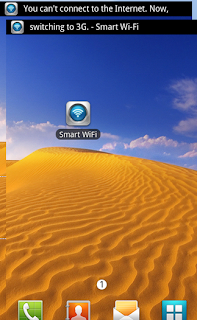Dear users,
I am the developer of Smart Wi-Fi.
After majoring in software engineering at university, I developed embedded Linux device drivers and multi-platform middleware in the semiconductor fabless industry for three years (2008 to 2010) and developed Wi-Fi apps (OEM for Samsung) and Android platform porting for three years from 2010 to 2012.
One of the many projects I have worked on for the past five years is called Smart SIM. This was a very innovative project that aimed to embed the Android platform at the USIM and control devices of mobile phones using USB I/F. Can you imagine changing your mobile phone to an Android smartphone or a Windows mobile phone simply by changing the USIM?
Unfortunately, the project had many issues including the bandwidth and reaction rates of USB I/F. The idea was commercialized through 2010 MWC, and then soon died out.
I have introduced this project to share my experience. I analyzed and ported Wi-Fi Chip Driver (Atheros ar6xxx), wpa_supplicant, dhcp and Android Wi-Fi Layer while separating the Android Wi-Fi module during the project. In other words, I gained experience and expertise by analyzing all Wi-Fi software for Android.
Smart Wi-Fi was developed based on these experiences, and I have a strong commitment to this app because it is my first app. Its convenient functions set it apart from previous Wi-Fi apps, and the smooth U/I completed with game graphics will enhance the convenience of your experience.
I promise that I will continuously provide updates to make Smart Wi-Fi a world-class app, with maximum convenience and excellent functions.



















